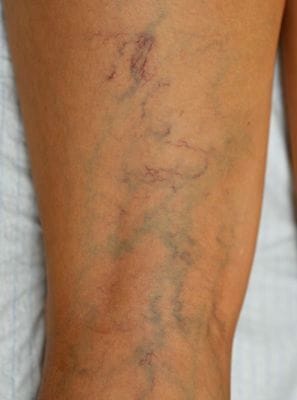The procedure is performed in Mr Milne's rooms and takes between 15 - 60 minutes depending on the number of veins needing injection. No anaesthetic is required. You will lie on a treatment couch during the procedure and a gentle tourniquet will be applied to the leg/s being treated.
During microsclerotherapy, Mr Milne will inject a sclerosant solution in to the spider veins and reticular veins using very fine needles with the assistance of LED lighting and loup magnification. If ultrasound-guided sclerotherapy is performed at the same time, an ultrasonographer will assist Mr Milne with guiding the needles in to larger varicose veins for injection of the sclerosant.
The sclerosant (Aethoxysclerol/polidocanol) acts to damage the lining of the diseased veins, causing them to collapse and clot off. An inflammatory reaction ensues which absorbs the vein over months.
Multiple injections will be required for each leg, the exact number depending on the extent of disease. It is normal to experience a fine stinging pain from the injections. Multiple cotton wool balls will be taped over the injection sites to help maintain compression of the veins and absorb any ooze.
Please Note:
- Microsclerotherapy is the gold-standard treatment for spider veins and reticular veins. However, despite optimal filling of veins with sclerosant during treatment, residual veins may remain at follow up. For optimal results, particularly in patients with widespread spider veins, it is usual to require more than one microsclerotherapy session.
- The response to treatment varies from patient to patient and is difficult to predict. Some veins respond to very dilute sclerosant, others require a higher concentration. A very small percentage fail to respond to even the strongest concentration of sclerosant.
- After treatment, the spider veins and reticular veins will look worse for about 6 - 8 weeks before they begin to disappear. Be minful of timing with upcoming beach holidays. Larger reticular veins (and varicose veins, if treated with ultrasound-guided sclerotherapy) are expected to become hard, lumpy, and a little tender when pushed on. This is a sign of successful treatment. The veins will gradually soften and be absorbed by the body over time. In about 25% of cases, a degree of light-brown pigmentation occurs along the course of treated veins. This typically fades over time, but can take months.


